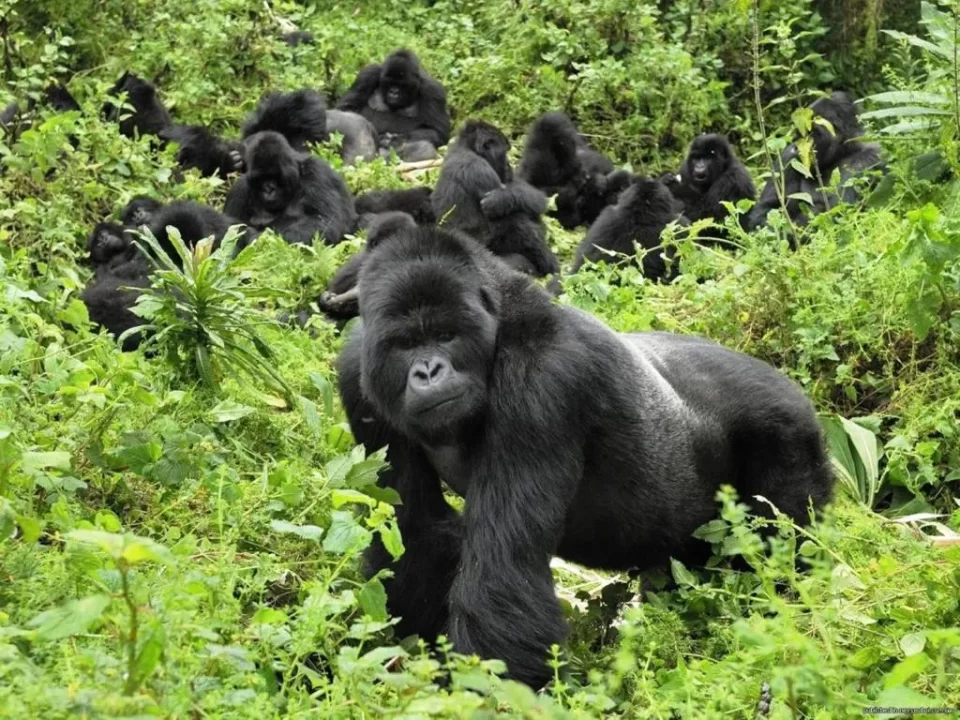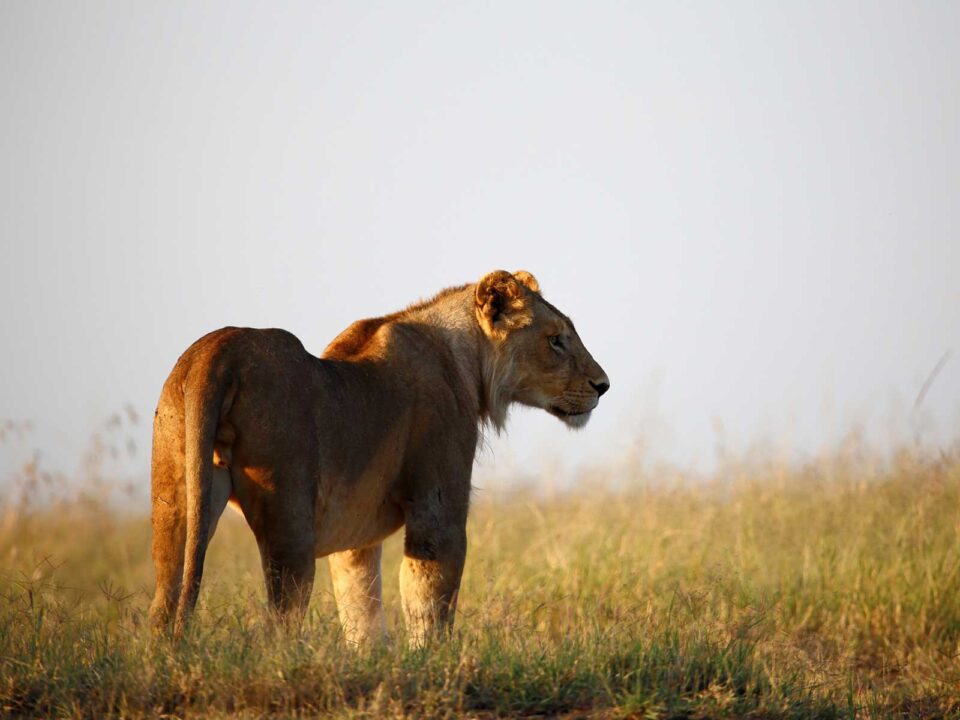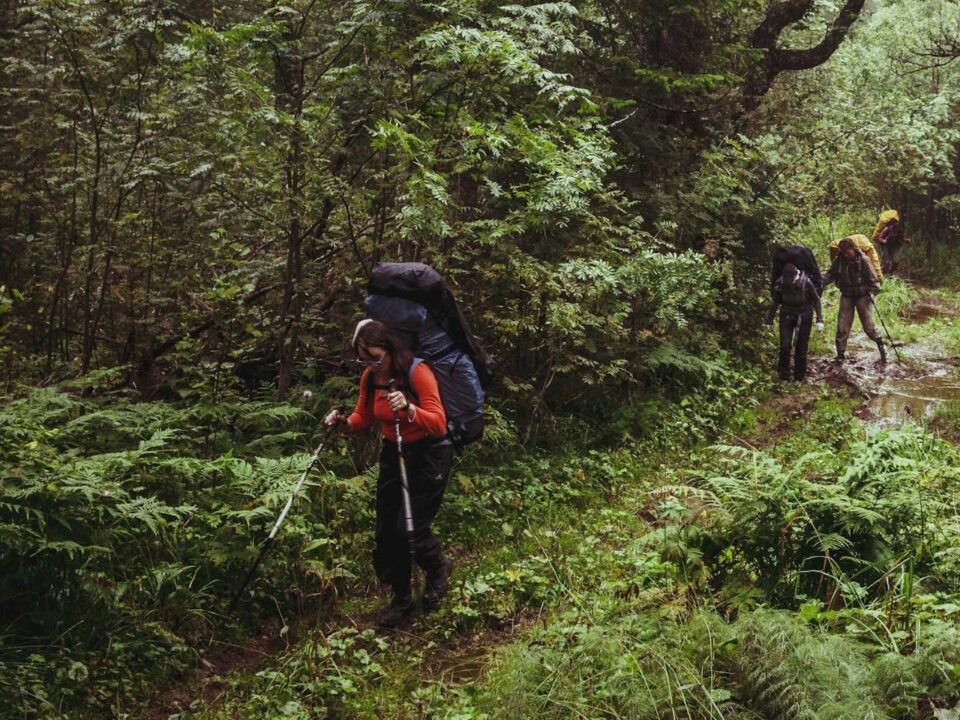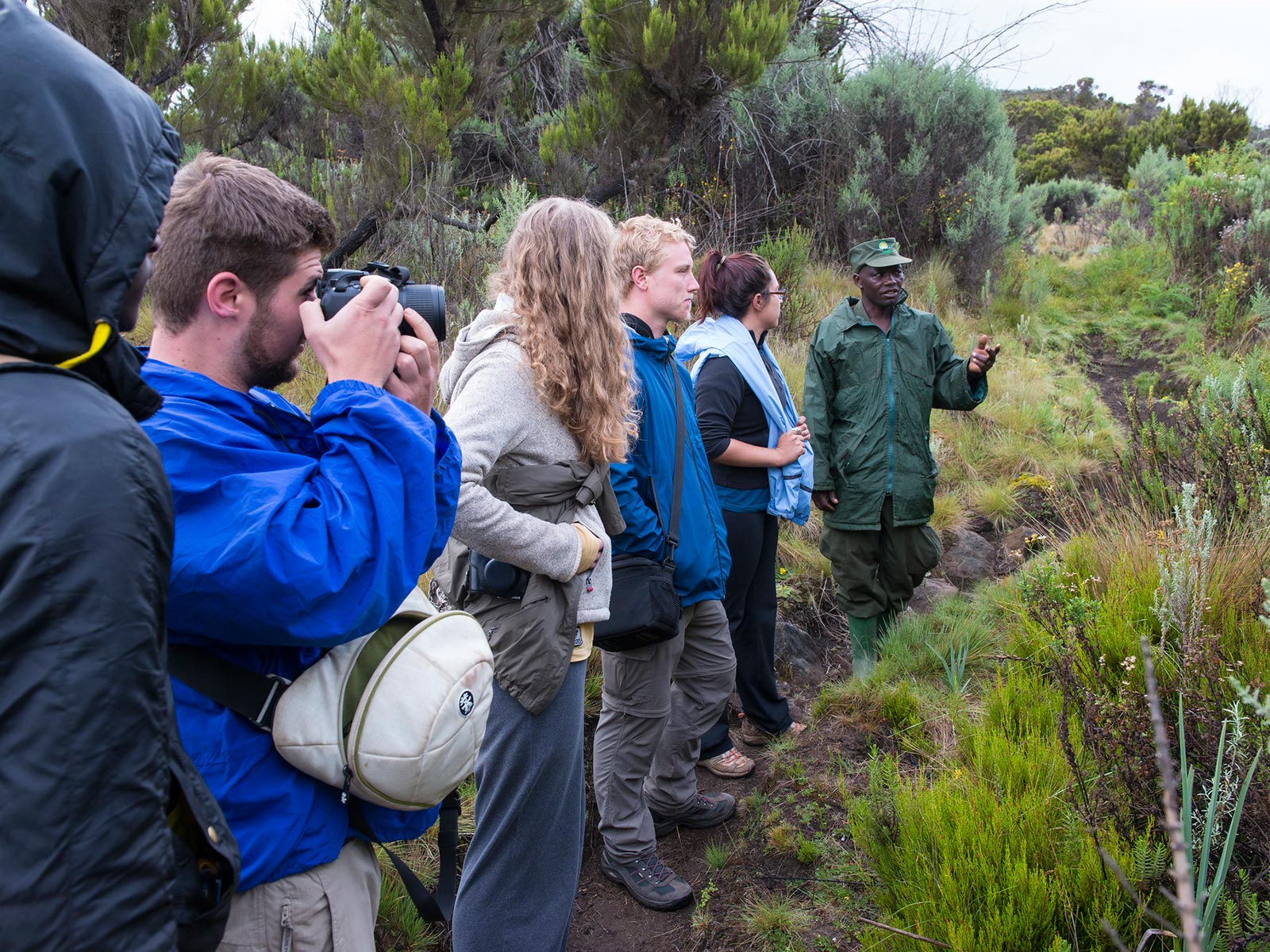
Group Safaris in Uganda
July 28, 2023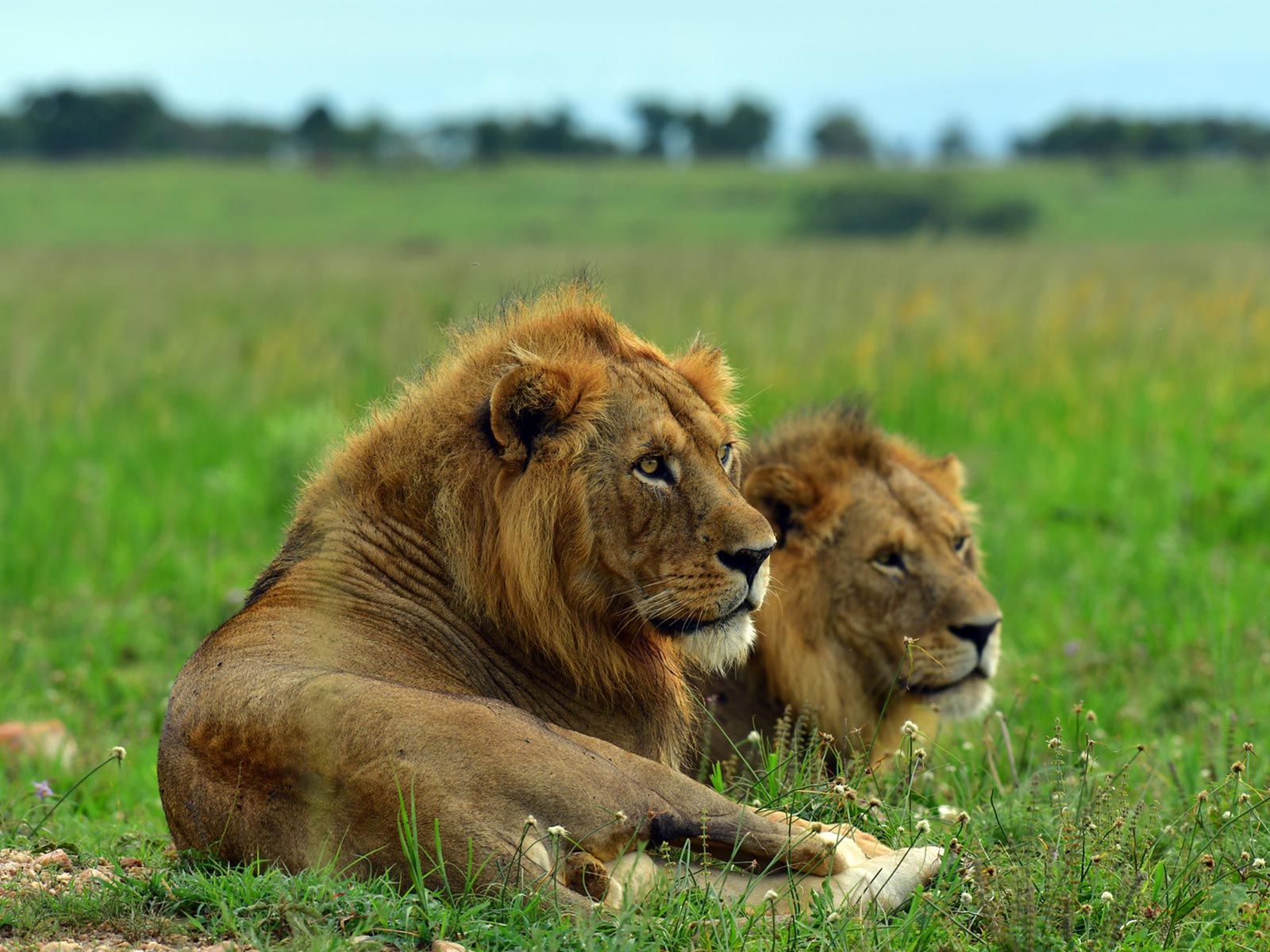
Group Safaris to Murchison Falls National Park
July 28, 2023Group Safaris to Bwindi Impenetrable National Park
Bwindi Impenetrable National Park is an extraordinary gem of ecological importance, originating as a forest reserve in 1942 and eventually becoming a UNESCO Natural World Heritage Site. Its name “Mu Bwindi” in the indigenous community’s dialect translates to “the place of complete darkness or hazy visibility,” perfectly capturing the essence of its thick rainforests immersed in mist. Encompassing around 330 square kilometers in the southwest of Uganda, Bwindi is a magnetic destination for travelers seeking encounters with a diverse range of wildlife, including mammals, colorful birds, insects, and reptiles. Embarking on large group safaris to this unique park necessitates meticulous planning with a travel agency to ensure a seamless and memorable experience for all participants.
Exploring Bwindi Impenetrable National Park
Situated in the Kigezi highlands on the fringes of the Virunga volcanic range, Bwindi presents explorers with both stunning landscapes and daunting challenges. The rugged terrain of the volcanic mountains, characterized by precipitous cliffs and gullies, demands physical endurance. Moreover, the dense rainforests with their unpredictable weather patterns make the journey even more enthralling. Rainfall occurs frequently, causing vegetation to thrive and creating slippery pathways. Participants in large group safaris to Bwindi must possess a certain level of fitness and resilience to navigate through this captivating wilderness.
Weather and Seasons
Uganda’s location in the African tropics subjects it to a climate characterized by two rainy seasons and two dry seasons annually. The long rainy season, lasting from mid-March to May, blankets the park with thick clouds, leading to poor visibility, thunderstorms, cold temperatures, and prolonged heavy showers. Landslides and flooding in valleys are not uncommon during this period. On the other hand, the short rainy season occurs from late September to November, featuring milder rains. Large group safaris during the rainy season offer unique opportunities to witness the rainforest in its full splendor. However, road travel might be more challenging, and some safari camps may provide discounts during this time.
Uganda’s long dry season spans from June to September, with a brief dry season occurring from mid-December to February. During these months, the skies clear up, and sunshine becomes more abundant. The dry season also witnesses the fruiting of many trees and shrubs, making it an excellent time for wildlife safaris, especially for large groups. The roads may become dusty due to dry conditions. Proper planning is essential for large group safaris to ensure they align their travel with the ideal weather conditions for their chosen activities.
Indigenous Communities and Sectors
Bwindi Impenetrable National Park not only shelters diverse wildlife but also hosts fascinating indigenous communities. The Bakiga people reside in the Kigezi highland area to the north and east of the park. A welcoming and hardworking community, the Bakiga engage in subsistence farming and rear livestock as insurance against unforeseeable calamities. Towards the south and west edges of the forest, the Bafumbira community shares their similar lifestyle, practicing subsistence crop cultivation. Moreover, the Batwa, an indigenous Ugandan community, historically lived within the forest, relying on fruit gathering, hunting, and fishing. To preserve wildlife, the Batwa relocated to the forest’s edges. Large group safaris offer an exceptional opportunity to interact with these unique communities, learn from their way of life, and support their cultural heritage and livelihoods.
Bwindi Impenetrable National Park is divided into four sectors:
Buhoma Sector:
Situated in Kanungu district, this sector serves as the park’s headquarters. Buhoma witnessed the first successful habitation of the Mubare gorilla group in 1992, marking the beginning of mountain gorilla trekking safaris in Bwindi. This sector now boasts a thriving tourism infrastructure, including safari camps of varying qualities, a hospital, and an urban trading center. Buhoma offers a plethora of activities, including gorilla trekking, birdwatching, nature walks, and visits to the Batwa community.
Ruhiija Sector:
Located in Rubanda district, Ruhija is characterized by gently sloping hills and diverse bird species. It is easily accessible via a dirt road that passes the park offices and the gorilla trekking assembly point. Ruhiija’s rainforest is less dense, making it ideal for large groups seeking a somewhat easier trekking experience while enjoying the beauty of the wilderness. This sector is particularly popular among birdwatchers due to its colorful and elusive forest bird species.
Rushaga Sector:
Extending into Kisoro district, Rushaga offers the highest elevation and coldest temperatures within Bwindi forest. It also presents the most challenging terrain for trekking, providing an authentic and immersive gorilla trekking experience. With eight habituated mountain gorilla groups, Rushaga offers the highest chance of encountering these magnificent creatures. Several safari camps cater to large groups, providing a wide range of accommodation options.
Nkuringo Sector:
Located near the international borders with the Democratic Republic of the Congo, Nkuringo is another high-altitude area with one habituated gorilla group. The remoteness of Nkuringo makes it a less-frequented sector, but it is a paradise for birdwatchers, boasting unique forest bird species. High-end and mid-range safari camps offer accommodations for large groups.
Activities for Large Group Tours
Bwindi Impenetrable National Park offers an array of captivating activities for large group safaris:
Mountain Gorilla Trekking Safaris:
A life-changing experience of encountering mountain gorillas in their natural habitat. Each group is limited to eight individuals per day, and prior booking is essential.
Mountain Gorilla Habituation Expeditions:
For a more in-depth experience, gorilla habituation allows small groups of tourists to spend more time observing and interacting with a gorilla family.
Birdwatching Safaris:
With over 23 forest endemic bird species, Bwindi is an essential destination for birdwatchers. Large groups split into smaller manageable groups can explore the park’s diverse avian life.
Forest Walks and Hiking Expeditions:
Aside from gorilla-related activities, Bwindi’s lush forest and volcanic landscapes invite adventurers to partake in forest walks, hikes, and exploration of waterfalls and craters.
Community Engagements and Voluntarism:
Large group safaris provide opportunities to engage with the local indigenous communities, learn about their traditions, and support conservation and community development efforts.
Logistics and Travel
Accessing Bwindi Impenetrable National Park may involve adventurous road travel due to its remote location and challenging roads. From Kampala, it takes an average of nine hours on paved tarmac roads to reach the nearest big towns of Kisoro, Rukungiri, and Kabale. From there, dirt roads with bumps grant access to the various sectors of Bwindi. Large groups must carefully plan their mode of transportation, such as private buses, minibusses, safari vans, or safari land cruisers, to ensure a comfortable and efficient journey.
For those who prefer air travel, Kihiihi town, north of Buhoma sector, and Kisoro town, south of Rushaga and Nkuringo sectors, boast airstrips with scheduled light craft flights connecting to the rest of Uganda. This option offers a quicker and more convenient means of transportation, especially for large groups with limited time.
Accommodation and Services
Bwindi Impenetrable National Park provides a diverse range of accommodation options, catering to different budgets and preferences. Large groups can choose from luxury lodges, mid-range hotels, and budget-friendly campsites. Each lodging facility ensures high-quality hospitality services, including comfortable rooms, meals, and other amenities to ensure a pleasant stay during the safari.
Moreover, the staff at these establishments are well-trained and equipped to offer exceptional customer service, making sure that the needs and expectations of large groups are met. Travel agencies and safari operators work closely with the accommodations to arrange smooth and seamless experiences for group travelers, ensuring that all logistical aspects are taken care of to make the safari memorable and enjoyable.
Conservation and Community Support
A key aspect of large group safaris to Bwindi Impenetrable National Park is the focus on conservation and community support. As travelers immerse themselves in the beauty of the rainforest and encounter the incredible wildlife, they are also reminded of the importance of preserving this delicate ecosystem. Conservation efforts in the park are aimed at protecting endangered species, especially the mountain gorillas, and preserving the rich biodiversity for future generations to appreciate.
Additionally, large group safaris present opportunities for travelers to engage with the local communities in a positive and meaningful way. Visiting indigenous communities, such as the Batwa, provides a chance to learn about their cultural heritage and traditions, empowering them financially through responsible tourism practices. By supporting the communities, large group travelers contribute to the conservation of both wildlife and cultural heritage in the region.
Conclusion
Bwindi Impenetrable National Park stands as a unique and captivating destination, offering large group safaris a chance to explore the rich biodiversity, encounter majestic mountain gorillas, and engage with indigenous communities. From thrilling gorilla trekking expeditions to mesmerizing birdwatching safaris, Bwindi caters to various interests, providing an unforgettable experience for every traveler.
With proper planning, the guidance of experienced travel agencies, and a focus on conservation and community support, large group safaris to Bwindi Impenetrable National Park promise to be not only an adventure of a lifetime but also a meaningful and responsible way of exploring and preserving this extraordinary natural wonder. Whether embarking on an exciting gorilla trek or immersing in the local culture, Bwindi’s allure will leave travelers with cherished memories and a deeper appreciation for the wonders of the natural world.


